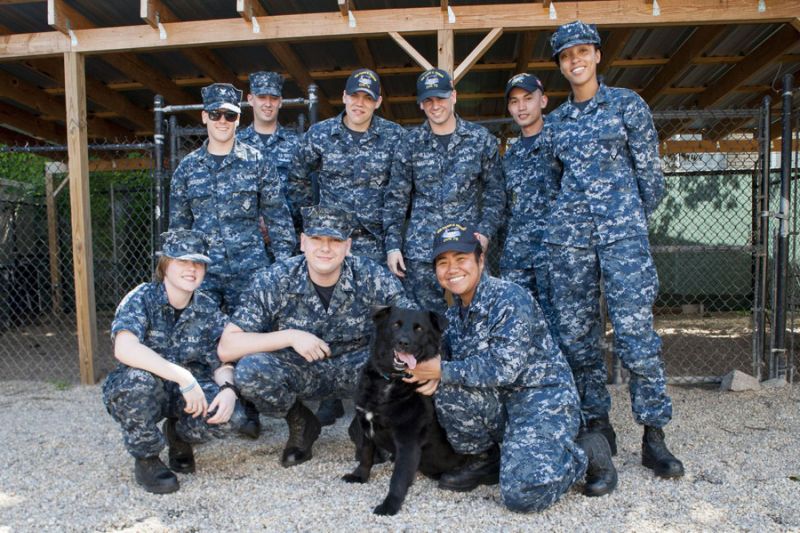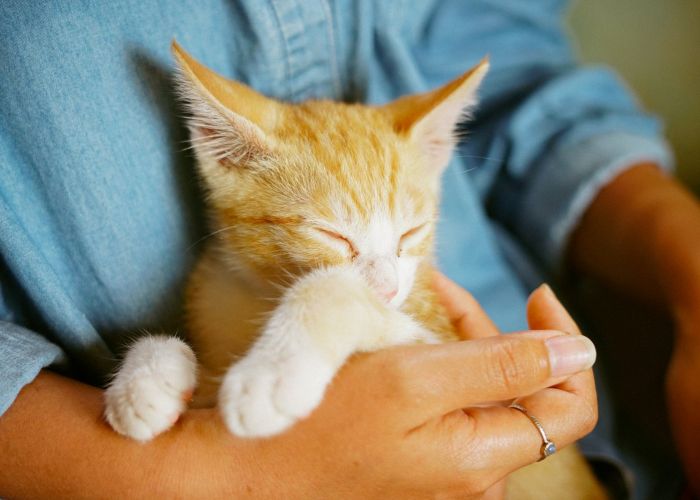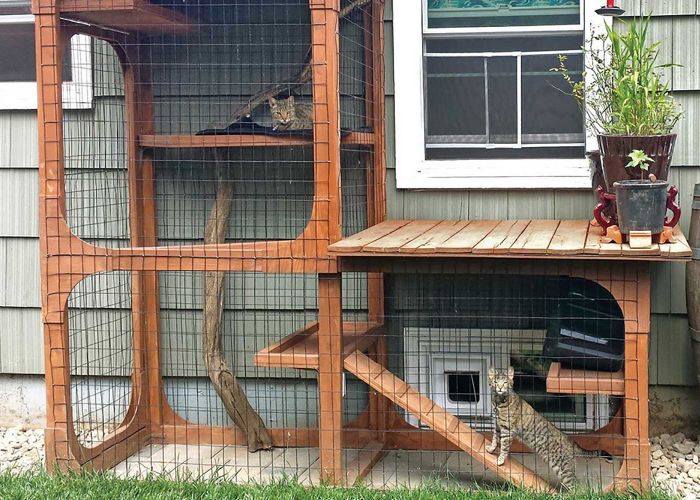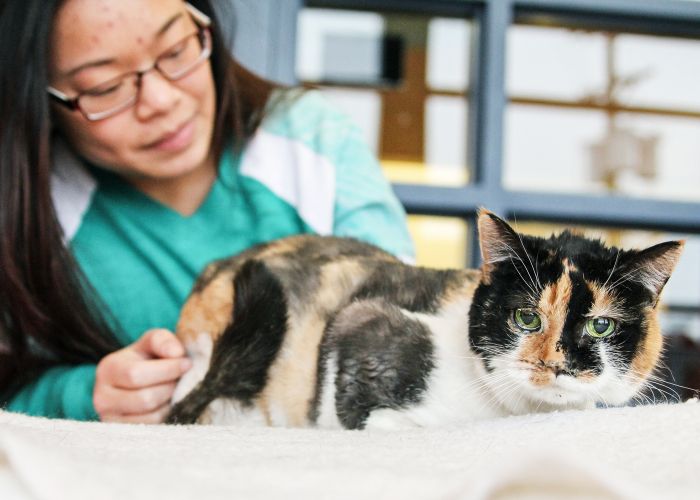Tour of duty
Service members are a force for good at Virginia shelter

Naval Station Norfolk in Virginia’s Hampton Roads region is the country’s largest naval installation, and it’s common to see young service members in the lobby of the Norfolk SPCA. Many are there to adopt or to bring their pets to the shelter’s veterinary clinic; others come to volunteer their time to help homeless animals.
“When they’re in port and not out to sea, there’s less for them to do,” explains former executive director Rob Blizard. “They want to keep occupied and give back to the community, as if they’re not giving enough. They come in here, and you can always tell that it’s them: They’re young, in shape, energetic. Frequently we’ll ask them to do outdoor grounds work or cleanup, and they’re always willing to do that.”
Those aren’t the only ways that military members have helped the Norfolk shelter in recent years. Several sailors posed for the shelter’s “Magic Mutts” fundraising calendar, a veterinarian (who is a captain in the Navy) volunteered at the shelter’s clinic, and a military spouse formed a nonprofit to help community cats living on the base.
“Service members by nature are very service-oriented, not only service for the nation but also for their community,” says Cmdr. Ted Carlson. “We’re very regimented; tell us what you want, and we’ll make it happen.”
During his 29 years in the Navy, Carlson has lived in many different cities, but wherever the posting, he and his wife, Ashleyann, check out the local animal shelters.
In San Diego, they added several shelter pets to their household, including a Dalmatian named Phoebe. In Colorado, Ashleyann volunteered at a municipal shelter and for a puppy mill rescue. In Norfolk, the couple toured the SPCA and came back with a “cranky old” cat they named Mrs. Kravitz. “We naturally look for older pets because they’re the ones forgotten,” Carlson says.
Before leaving Norfolk earlier this year for a new command, the Carlsons established a spay/neuter fund at the SPCA in honor of Phoebe, who died in 2009. It was the largest donation the shelter received from a living person in the five years that Blizard led the organization.
It was another reminder, he says, of the value of shelters reaching out to service members in their communities.
Here are some tips for engaging our nation’s finest:
Chain of command. Most commands have an ombudsman, who is a link between the military families and the command, says Carlson. “In the Hampton Roads area, the ombudsmen meet every other month and have various speakers come in. That’s an avenue to make sure families know about your shelter and its services.”
Blizard presented at quarterly orientations for new service members, and he reached out to naval groups with a history of volunteerism like the Command Religious Ministries Department of the USS Harry S. Truman, which organized volunteers to help with dog socialization and grounds maintenance at the shelter.
“You can get some pretty large groups depending on the size of the command,” says Carlson. “… They’re a great bunch of people, and the median age is pretty young. You start them off young, and you have a lifetime of volunteerism.”
Military honors. During Military Appreciation Day and Armed Forces Day, the Norfolk SPCA offers discounts on adoption and veterinary clinic fees to military personnel. “A lot of service members are starting out with new families and owning their first home,” says Carlson. “They’re adopting pets, and they need to know to come down to the local rescues and get them there.”
While future deployments can be a barrier to pet-owning for some, many have family members who are able to keep their pets during these times, Carlson says. Others who crave the companionship of animals but can’t commit long term can be a great match for foster care programs. “The military can be a very strenuous, arduous job,” Carlson says. “In my own personal experience, what has helped me make it through my tours has definitely been my pets.”
PR salute. Every base has a public affairs office, says Carlson, who recommends that shelters establish relationships with their staff. “The military obviously likes to have a positive image, and they like to cover a lot of community service.”
When sailors volunteered at the shelter, Blizard always made sure to send photographs to the public information officer and post them to the shelter’s social media channels. He also submitted articles about the good work accomplished by Navy volunteers to the local newspaper and to The Flagship, the Navy’s newspaper for the Mid-Atlantic region. “This is certainly a group that we want to honor and thank and revere,” he says.








